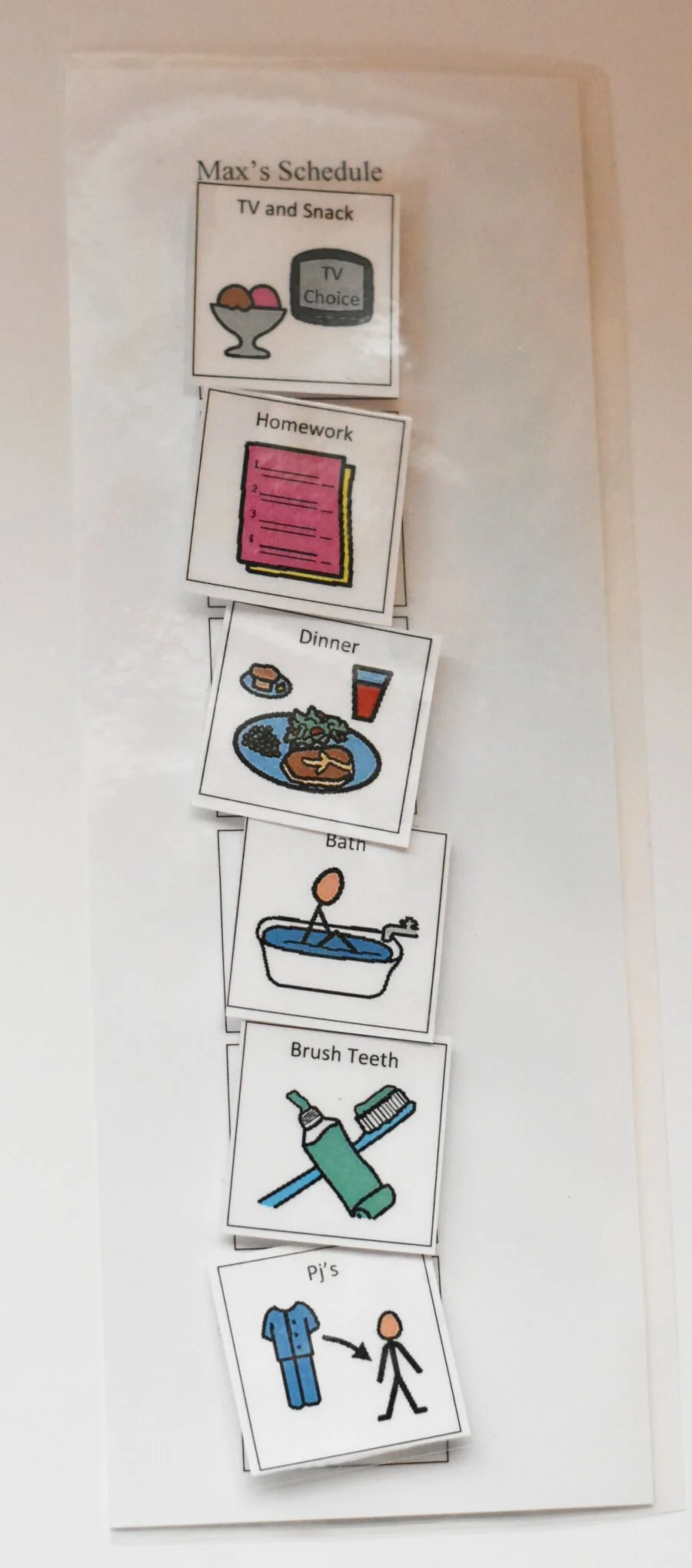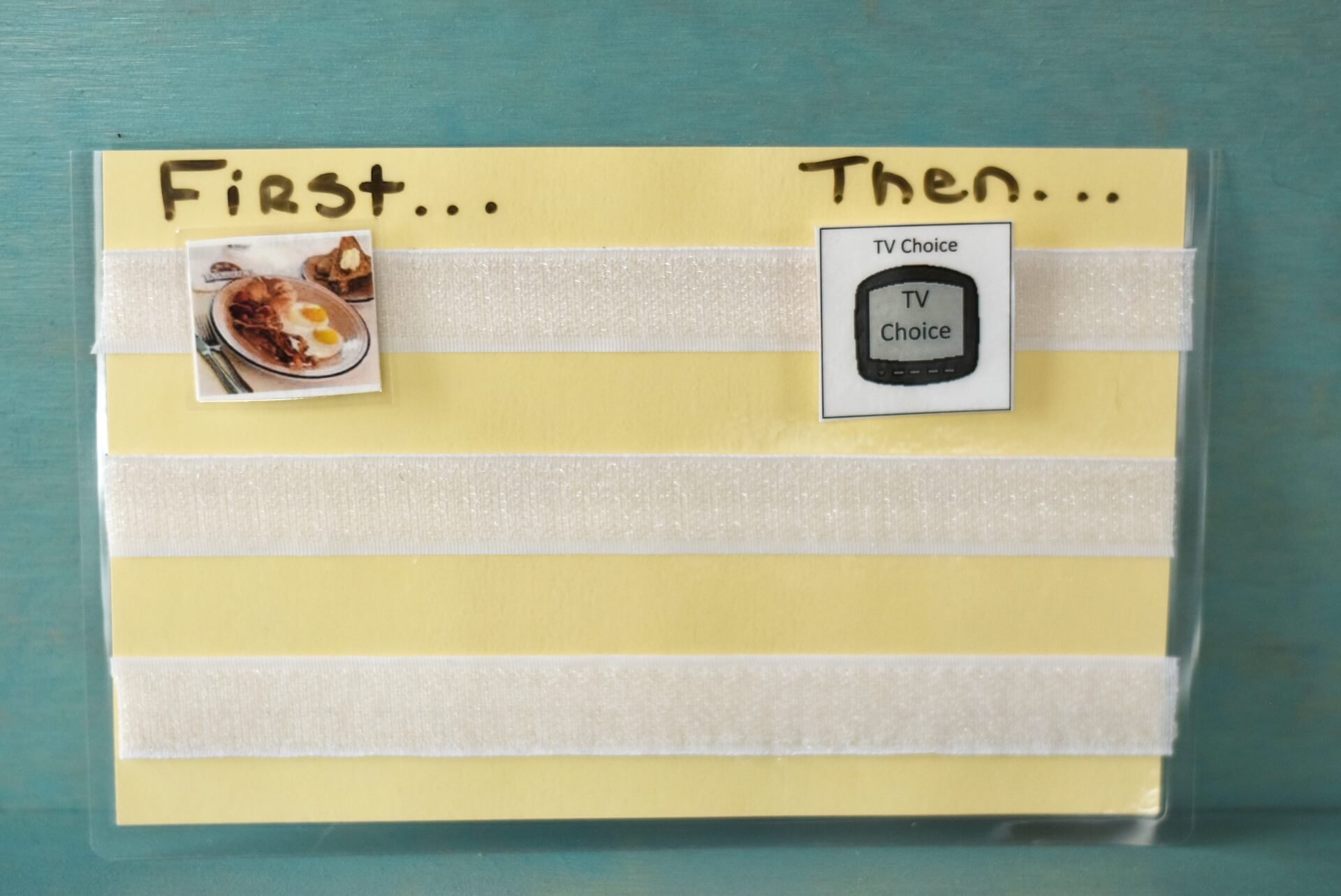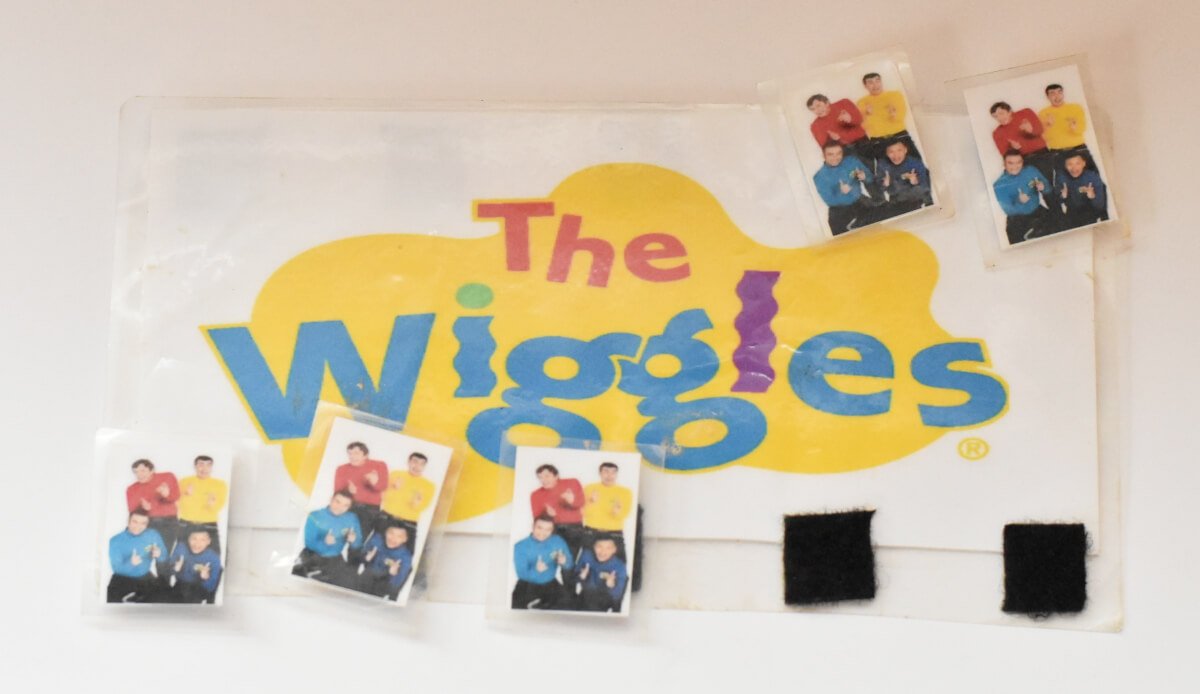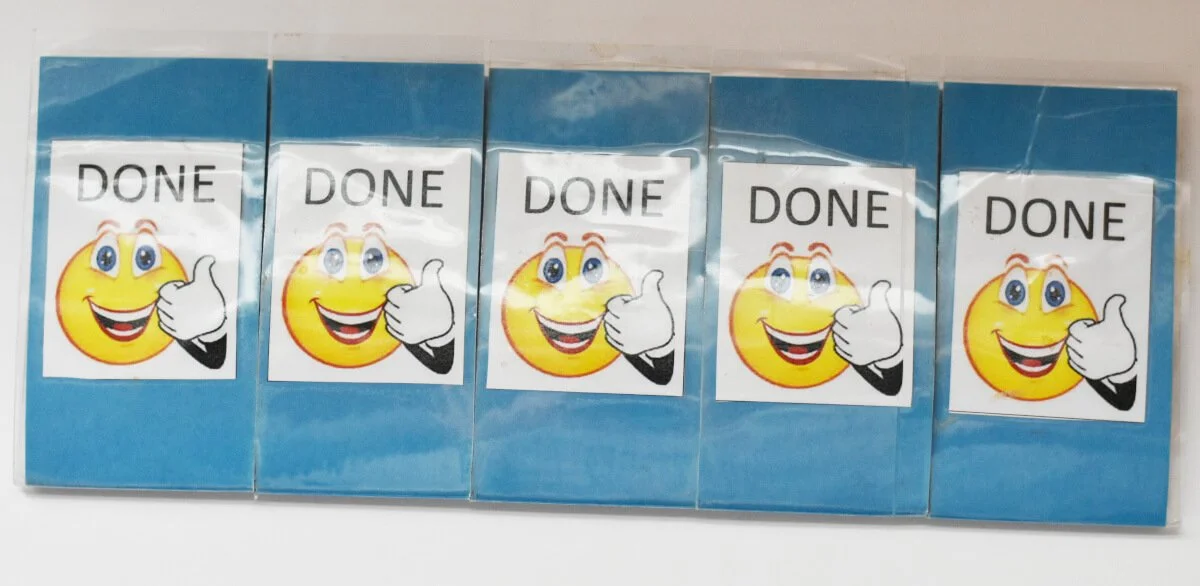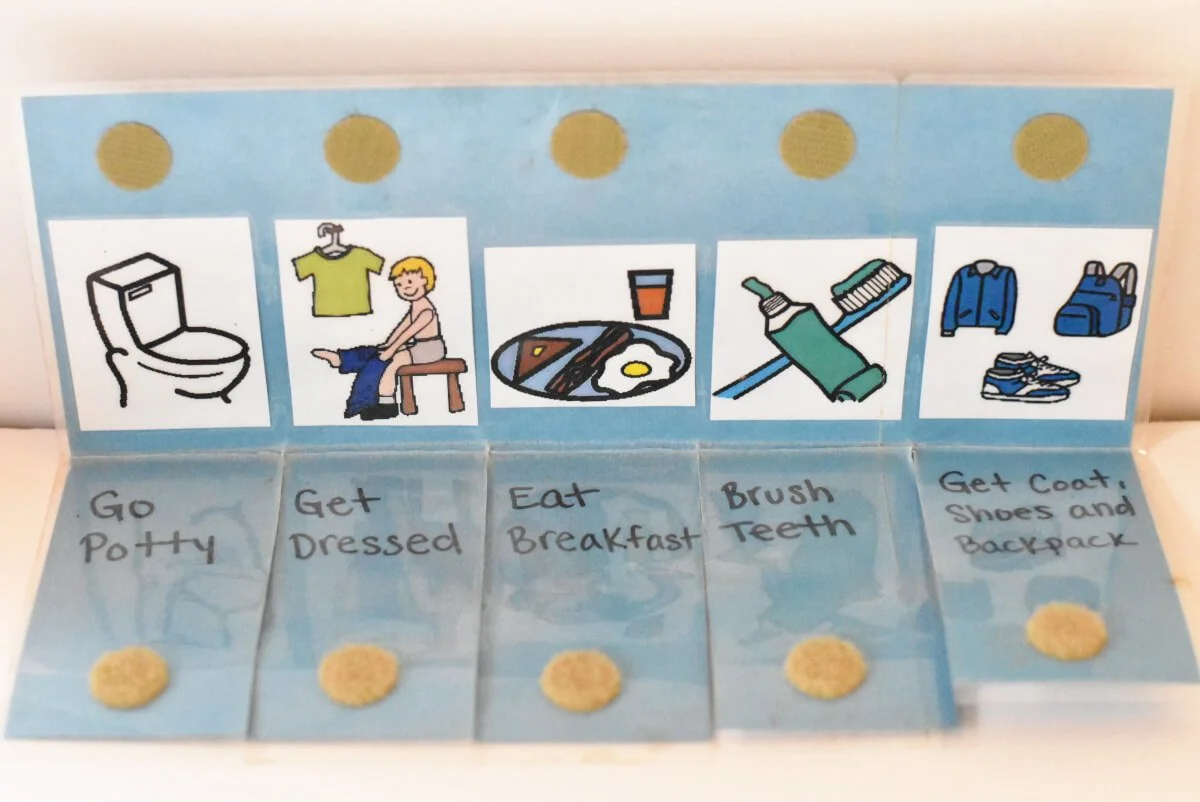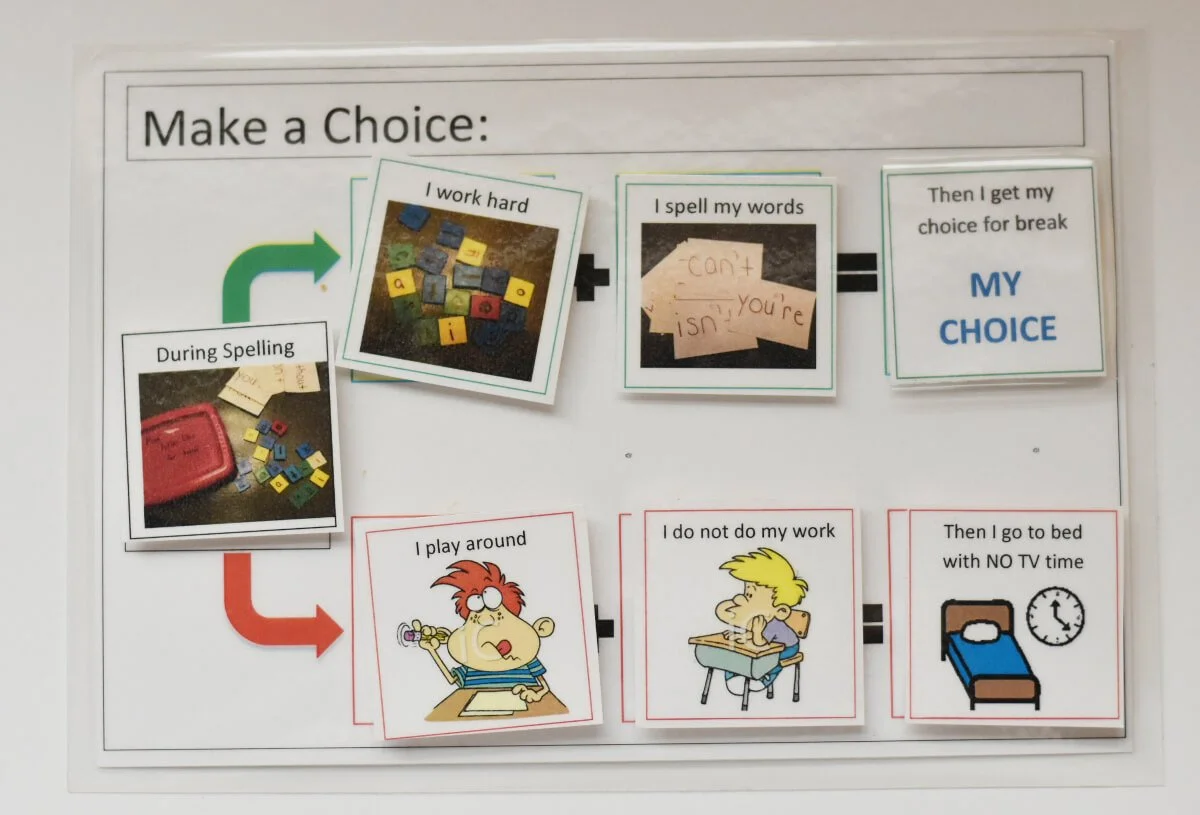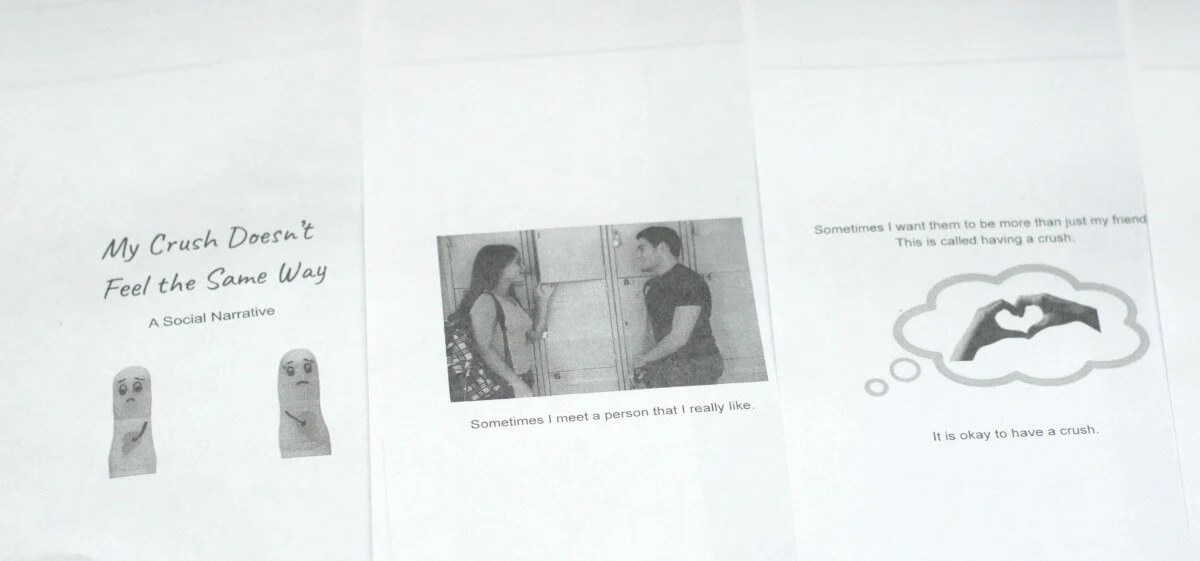Improving Behavior At Home Using Visual Supports With Your Child With Down Syndrome
Being a Mom of a child with special needs I’ve spent a lot of time worrying about, managing, and learning about behavior. I discovered very early on that behavior impacts A LOT of things in life especially for Max, who as a kid with Down Syndrome, is under more scrutiny than a child who was not born with DS.
Hey Mama Bears, before you read more, full disclosure here. There are affiliate links in this post so if you click on the link and buy the product I will earn a small commission. Now that we’re clear on that let’s get back to rocking life with special needs!
It’s the truth and whether it’s right or not our kids have a lot more eyes watching them than a kid who does not have a disability. Max can exhibit the exact same behavior as another kid in his class (often he does because our kids are so great at modeling) and it’s a much bigger issue for Max.
Fair? No.
Part of life for a kid with a disability? Yes.
Determined to not have any doors shut in our face solely because of Max’s behaviors I made it my mission very early on to become a Mom behavior guru. I read all the books, I worked with our behavior specialist, and I applied what I learned at home with Max day in and day out.
Consistency is key.
If you want to have a better understanding about Down Syndrome and how it impacts behaviors may I suggest my three part blog series focusing on exactly this.
6 Brain Differences In Your Child With Down Syndrome And How It Impacts Behavior
7 Common Behavior Issues In Children With Down Syndrome And Tips To Manage Them
15 Best Behavior Hacks For Your Child With Down Syndrome
I also highly recommend the book Supporting Positive Behavior In Children and Teens With Down Syndrome.
On my way to becoming a Mom behavior guru I discovered the wonderful world of visuals and how using visuals at home changed the game for us.
Now Mama Bear, like with anything on the Twenty One Dandelions blog you should decide what will work for you and your family, what won’t, and implement accordingly.
What Are Visuals?
Visuals or visual supports are things we see that enhance communication and facilitate understanding. Most of us use visual supports every day especially if we drive as road signs are an example of a visual support.
Visual supports can be objects, pictures, words, or symbols to represent directions, schedules, rules, etc. Visuals are a powerful tool many teachers use in the classroom but as parents we don’t think about using them at home.
We’re not utilizing a tool that is GAME CHANGING!
Why Visuals Help Children With Down Syndrome
Visuals can help anyone and everyone BUT they are especially helpful for our kids with Down Syndrome.
Why Visual Supports Help Children With Down Syndrome: Visual Learners
Our children with Down Syndrome are strong visual learners so if we present information in a visual form they’re going to learn it faster than if we only present new information verbally.
Our kids are not great auditory learners. Auditory processing tends to be slower in individuals with DS and most kids with Down Syndrome have some hearing loss. It may be mild but even mild hearing loss can have an impact. Coupled with the fact that our kids tend to have a lot of ear infections you can understand why they may not be great auditory learners.
Why Visual Supports Help Children With Down Syndrome: Better Processing
Visual supports allow for improved processing because our kids can look at it for as long as they need which allows for increased time to process the information cognitively.
When we give verbal information the words are available only for a short period of time right? A brief moment as we’re saying the words. When information is presented visually that information is there for as long as they need it.
Why Visual Supports Help Children With Down Syndrome: Allows For Self Monitoring
Visuals support independence and help combat learned helplessness. Learned helplessness can occur when adults in our kids' lives are doing too much for them and the child learns they do not have control over their lives, feels like they can’t do hard things, or just aren’t motivated to do things for themselves because it’s easier to let someone else do it.
We don’t want this. We want our children to be as independent as possible and happy. Learned helplessness can lead to depression. So, we want our kids to learn to do things on their own or as independently as possible but we want to set them up for success. Visual supports can help.
A step by step visual of how to brush their teeth, use the bathroom, or make themselves a sandwich will help foster independence and allow them to learn new skills. If they forget the next step they simply consult the visual!
Why Visual Supports Help Children With Down Syndrome: Decrease Anxiety. Decrease Stress. Improve Consistency.
Visual supports help decrease stress and anxiety in our kids. Think about it, if your boss came into your office, gave you some verbal information that you didn’t understand because you couldn’t hear them or they were talking too fast and then stood there looking at you clearly expecting you to do something wouldn’t you be stressed?!
My anxiety would shoot through the roof! Maybe you ask them to repeat themselves which they do but you’re still not 100% sure what they want or are asking. It would be a super stressful situation and we all know when we’re stressed we’re not at our best cognitively or behaviorally.
This is what happens to your child with Down Syndrome every day.
Visual supports also improve consistency. When we say something and then repeat ourselves there are subtle changes in that information.
Maybe we use a different word or add a word. Maybe we say it faster or slower than we did the first time. Maybe we say it louder or softer. It’s not consistent.
Using visuals especially if you’re using the same visual support unless you make a change on that visual it’s the same every time with the same information. Our kids thrive on consistency.
Why Visual Supports Help Children With Down Syndrome: Decreases Stress On Caregivers
Kids pick up on how we’re feeling. A stressed caregiver influences a child and not in a good way. Weekday mornings can be very stressful. We’re trying to get ourselves ready for work, our kids ready for school, feed kids, feed ourselves, you know how it is. If we’re constantly having to verbally tell our kids to do something it stresses us out.
A visual schedule of how Max’s school morning should go was THE BEST THING EVER!
Max’s morning schedule.
Truly, it was a game changer for us. Max used this schedule to go through the steps of his morning routine from using the bathroom, washing his hands, brushing his teeth, eating breakfast and so forth. It was all there for him to reference and follow the steps. Mom and Dad aren’t “yelling” at him to do things and he’s proud of his independence.
How Visual Supports Help
I’ve already touched on why visuals are great for our kids with Down Syndrome which goes along with how they help. Visuals do a variety of things such as…
Visual supports organize the environment.
A step by step visual of how to make a sandwich helps our kids organize the different steps that go into how to make a sandwich.
Visuals can also be used to communicate what happens in different environments. For example, in a library you may see visuals indicating that a certain space is a quiet space and there’s no talking. You can do this at home too!
If you don’t want your children eating and drinking in your living room, put up a visual communicating that as well as a visual indicating where it IS ok to eat and drink such as the kitchen and dining room.
Visual supports teach skills.
Not only do visuals help organize the environment, they also teach skills. A visual of the steps that need to be done when brushing your teeth teaches your child the hygiene skill of brushing their teeth.
Visual supports provide information.
Visuals highlight the main points of what you’re trying to communicate. A First-Then board shows a child what is happening first and then what will happen after that. First you need to finish your homework then you can watch YouTube. A visual can also be something like a timer. A child can reference how much time they have to play video games before they have to eat dinner.
Visual supports communicate what’s happening.
A schedule helps a child understand what their day is going to consist of and what to expect. A calendar helps a person with a disability keep track of the days of the week and what is going to happen that day. Max likes to know when movie and ice cream night is. FYI it’s pretty much every Friday night.
Visual supports explain rules and behavior expectations.
When Max was younger we had a simple sign with the house rules which included things like no hitting, no name calling, and use your inside voice. It was clearly displayed in a high traffic area where everybody would see it day in and day out. We would also review the house rules on a regular basis. This helped ALL my children understand and meet the expectations of our home.
Types Of Visual Supports And How To Use Them In Your Home
Visual Support: House Rules
Have a visual of the house rules. Keep it in a high traffic area where everyone in the family can see it such as the fridge. It doesn’t have to be fancy – a piece of paper with the rules will suffice. If your child can’t read then I would advise using pictures and words. If your child can read then simply writing out the rules is enough.
Visual Support: Schedules and Calendars
Have a visual schedule of your child’s day so they know what to expect. Look at it in the morning after they wake up or while they’re eating breakfast. When your child is transitioning from one activity to another, look at the schedule together.
Max’s evening schedule.
As your child becomes older they may not need a daily schedule. As a teen Max doesn’t have a daily schedule anymore but we do have a family calendar and a weekly board. The calendar hangs on the fridge and it has school vacations listed on it, doctor appointments, social events we’re attending, and sporting events such as soccer tournaments.
If you share custody of your child a calendar on the fridge is a great visual support to let them know when they will be at Dad’s house versus Mom’s house or whatever your situation may be.
We also have a weekly board where I write down all practices and games that week, any appointments we may have, parties or other social events as well as days we have free. Those are few and far between these days though!
Visual Support: Choice Boards
Giving your child some control or agency over their life is a great way to manage behaviors. Give them a choice whenever possible.
For example, it’s snack time. Hold up a bag of goldfish and a cheese stick and ask your child which they would like for a snack. You can also create a choice board. To create a choice board take pictures of different snacks your child likes, different drinks, different activities they do and when it’s appropriate place a couple of those pictures on the board and ask them to choose.
Visual Support: First-Then Board
We used a first-then board a lot after school. First you do your homework then you can watch TV. This is a great visual to use when your child has to do a non-preferred activity first but it’s followed by a preferred activity. We would use the first-then board along with a token board when doing homework.
First-then board.
Visual Support: Token or Reward Board
A token board is a positive behavior reinforcement tool and a visual support. With a reward board your child receives tokens (gold stars, stickers, checks also will work fine) for good behavior with a certain amount adding up to a reward.
We used a token or reward board all the time when Max was young. I would bring it with me when we had to go out and run errands. Before we would leave I would review the expectations with him (you can make a visual of this with pictures of your child holding your hand in the parking lot, no hitting, no yelling, good listening ears, etc) and we would decide on a reward.
If it was going to be a quick errand then the reward could be something like TV time when we returned. If it was going to be longer then I would usually do something like a handful of goldfish crackers or 5 minutes of watching videos on Mommy’s phone. After he ate his goldfish crackers or his 5 minutes were up then he would start working for more.
Token board.
Visual Support: Timer
Timers are a great visual to use in daily life at home. We set a timer so Max knows exactly how much time he has to watch TV or play on his phone.
Another great use of the timer is to set the timer for 15 minutes and during that time pick up toys around the house or have your child make their bed and clean their room.
Visual Support: Visual Lists/Checklists
Visual lists help your child become more independent. We had a visual list of the steps Max needed to take in order to use the bathroom. Hang the list in the bathroom next to the toilet or sink so your child can reference it. We also had a list of the steps Max needed to go through in the morning in order to get ready for school.
These lists were great for him and for us. They increased his independence, gave him a sense of accomplishment, and decreased the stress on us of always having to be right there directing him on what to do.
Visual Support: Calm Down Strategies
When your child is overwhelmed, have a visual ready of strategies they can use to calm down. When you notice your child is getting overwhelmed or overstimulated, show them the visual and they can choose what they would like to do. A visual also helps reduce the noise of you verbally giving them options and them having to auditorily process what you’re telling them.
Visual Support: Contingency Map
Contingency behavior maps show a visual representation of engaging in appropriate and inappropriate behaviors and the outcomes of those choices including the consequences.
Behavior contingency map.
You can use a contingency behavior map during your child’s bedtime routine. Show them if they take a bath, brush their teeth, and change into their pajamas following the rules they will get two stories before they go to sleep whereas if they do not follow the rules they will have to go right to bed without a bedtime story.
Visual Support: Stop/Wait/Break Card
Making a stop, wait, and break card to use at home is great. If you’re making dinner and your child wants your attention, hand them a wait card, finish what you’re doing, and then give them your attention. If you and your child are doing homework together or another activity that can be stressful or difficult, allow your child to use a break card to earn a 5 minute break.
Visual Support: Social Stories
Social stories are used to help your child understand what to do and how to behave in different social situations. They present social norms and expectations.
Social story about how to appropriately handle a crush not feeling the same way.
Visual Support: Labels
A good way to use labels in the home is to show your child where things go when they’re not being used. The playroom is a great place to use labels. Label bins with a picture of what goes in that bin. For example, if legos go in one bin take a picture of some legos and attach it to that bin. When you’ve set the visual timer for 15 minutes and everyone is picking up toys your child knows that all the legos found on the floor go into that bin because of the picture. This makes life easier for your child and YOU!
So there you have it Mama Bears! A guide to using visual supports in your home to improve behavior in your child with Down Syndrome. I hope you found something to help you rock this special life!
If you found this post helpful then be sure to check out…
How To Deal With Temper Tantrums: A Guide For The Special Needs Mom
Positive Parenting Solutions For The Special Needs Mom
Dandelion Tribe Takeaway: .Using visual supports at home can improve behavior, increase independence, and decrease caregiver stress.
Mama Bear Share: What visuals do you love to use?



